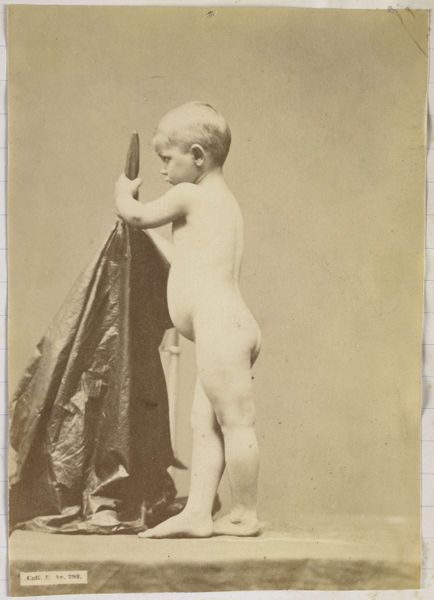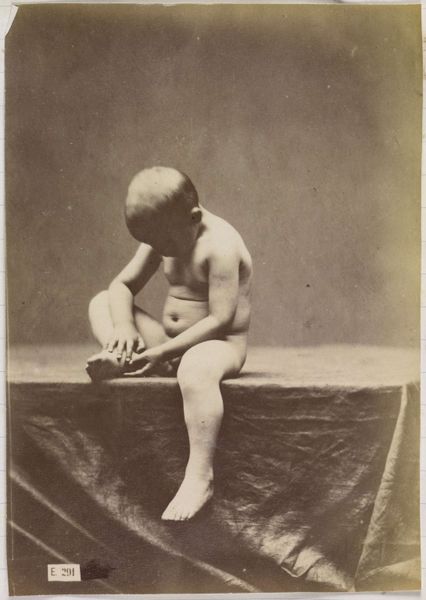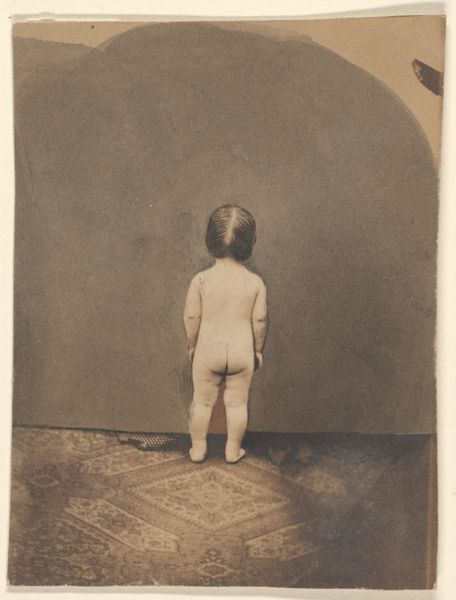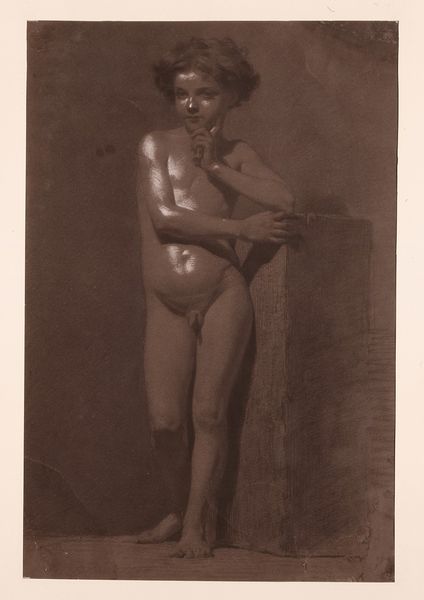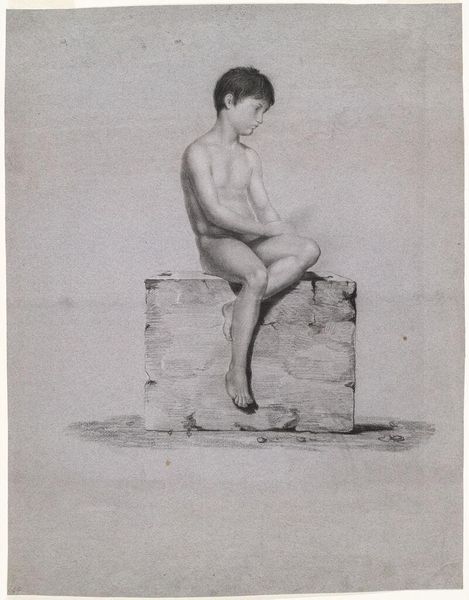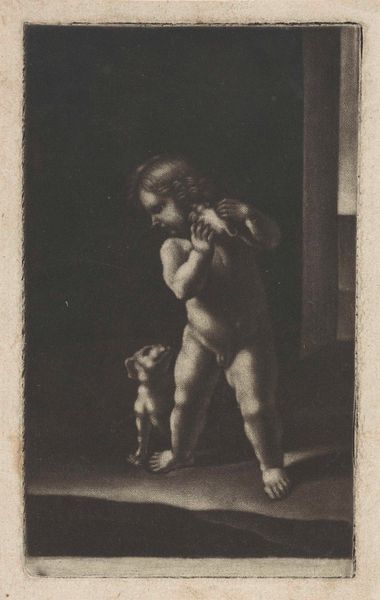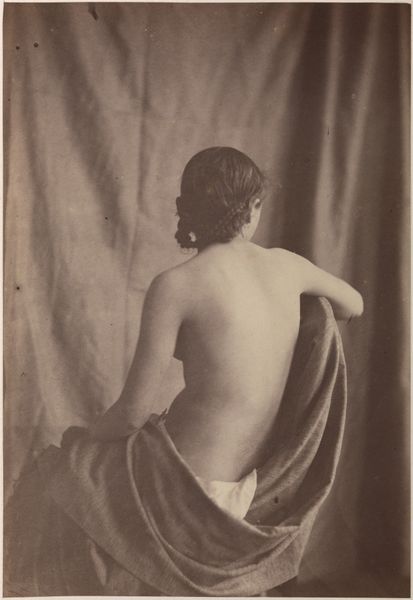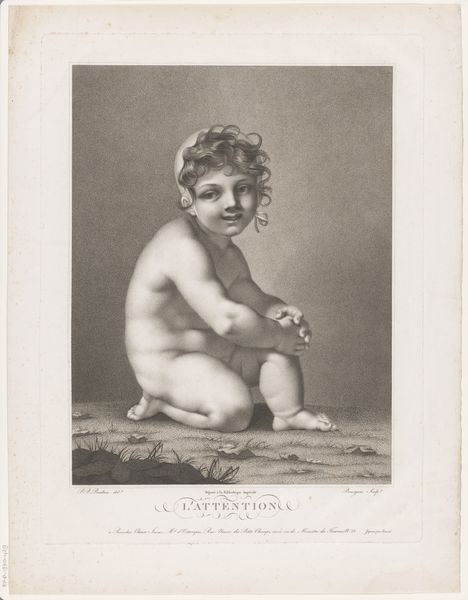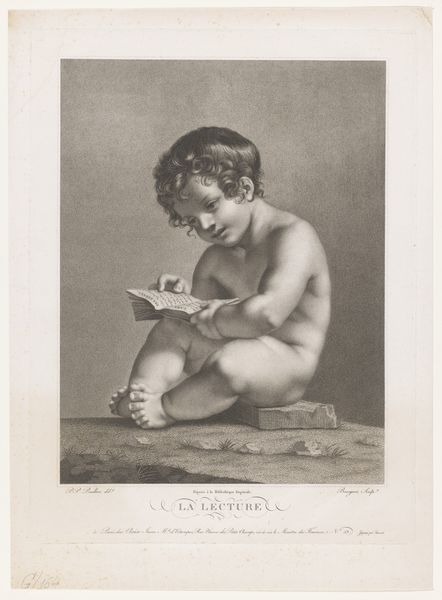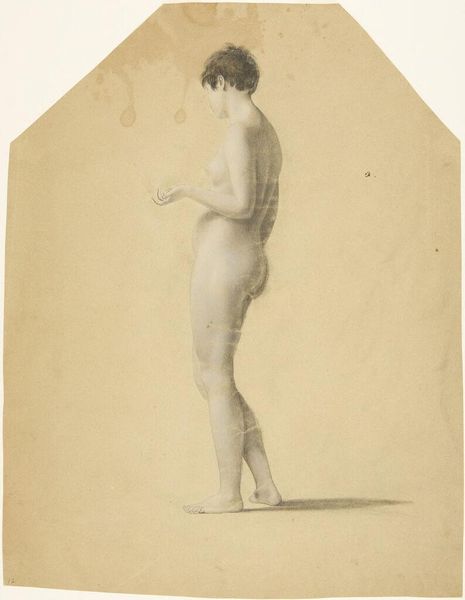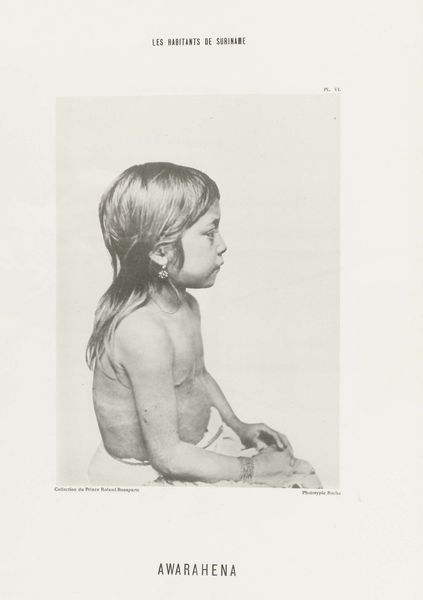
Studie van een naakt kind op de knieën gezeten en van opzij gezien after 1880
0:00
0:00
photography, gelatin-silver-print
#
portrait
#
negative
#
photography
#
historical photography
#
gelatin-silver-print
#
nude
#
realism
Dimensions: height 140 mm, width 98 mm
Copyright: Rijks Museum: Open Domain
Curator: Here we have Louis Jean-Baptiste Igout’s “Studie van een naakt kind op de knieën gezeten en van opzij gezien,” or “Study of a nude child kneeling, seen from the side,” a gelatin silver print dating from after 1880. Editor: The subdued tones immediately strike me. The texture almost looks like velvet, doesn’t it? You can nearly feel the coarse cloth the child is posed upon. Curator: Indeed. The soft focus creates a sense of timelessness. The gesture itself is reminiscent of devotional images. The bowed head, the supplicant posture… there's an element of vulnerable entreaty that transcends mere observation. Editor: I'm curious about the means of production here, though. Consider the labor invested in staging this shot. It’s a posed subject in a studio setting. I wonder what kind of compensation or trade the family of the model may have received. These economic transactions of artmaking are too often overlooked. Curator: That’s a critical perspective. One might also view the image through the lens of power dynamics. In portraying innocence, is Igout revealing or exploiting vulnerability? Is he commenting on power structures, or perpetuating them through this display of youthful naivete? Editor: Exactly. Furthermore, gelatin silver prints were relatively new at this time. Was he using photography to democratize image-making, making the art process more available to middle classes? Curator: Perhaps. And yet, this image shares artistic common ground with the academic tradition, where studies of nudes, idealized or otherwise, were considered vital for training. Whether it serves social progress or reproduces historical conventions remains an open question, I believe. Editor: I agree that the meaning depends so heavily on the economic circumstances. Looking at the materiality does provide one possible window into the history of its production and cultural consumption. Curator: This photograph really invites contemplation—its stillness belies the complex sociohistorical forces that shaped it. Editor: A study indeed, and perhaps we, the viewers, are equally being studied in how we react to this carefully composed photograph.
Comments
No comments
Be the first to comment and join the conversation on the ultimate creative platform.
